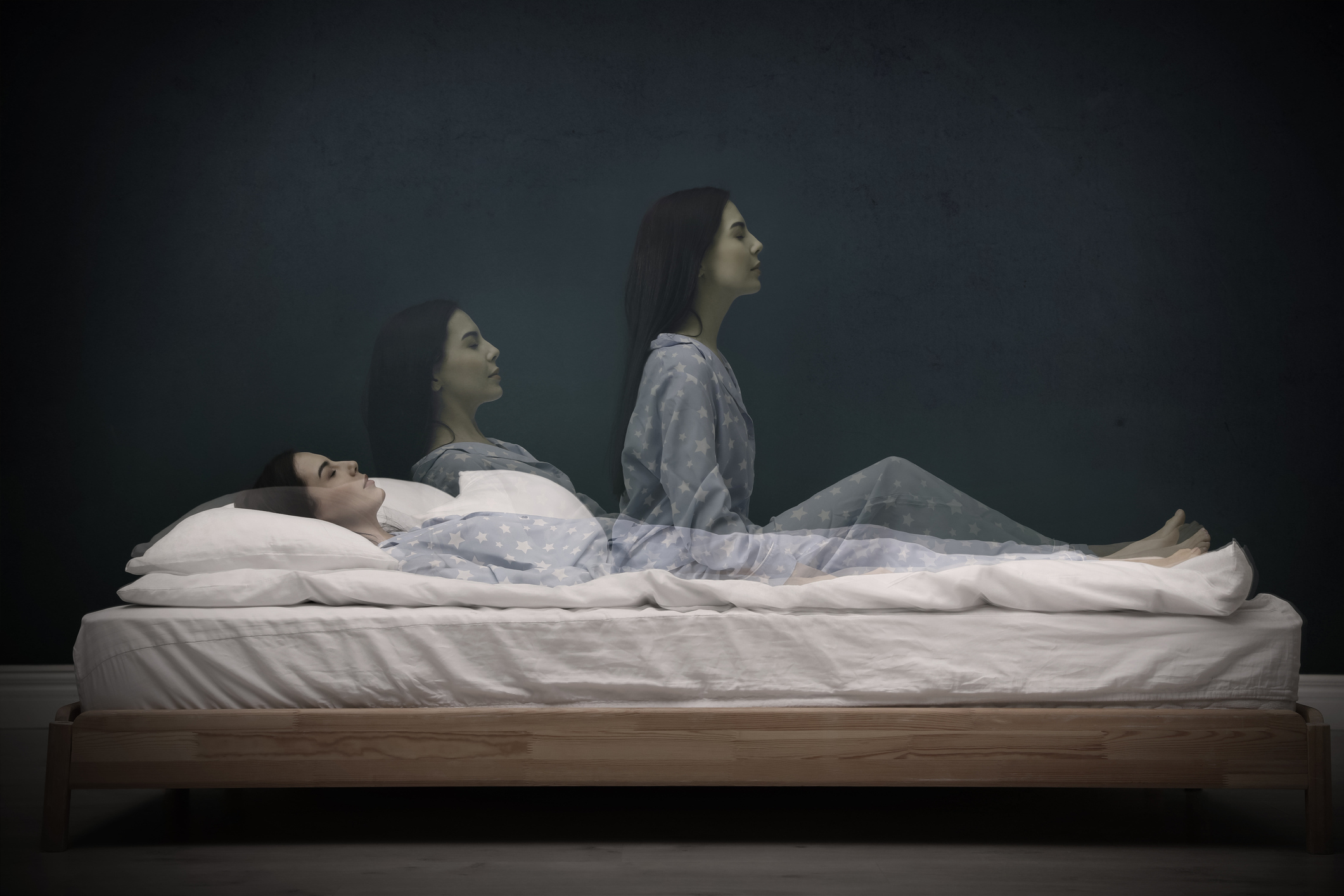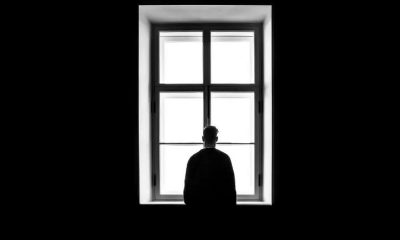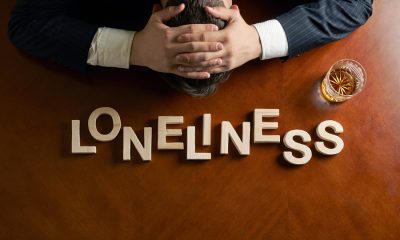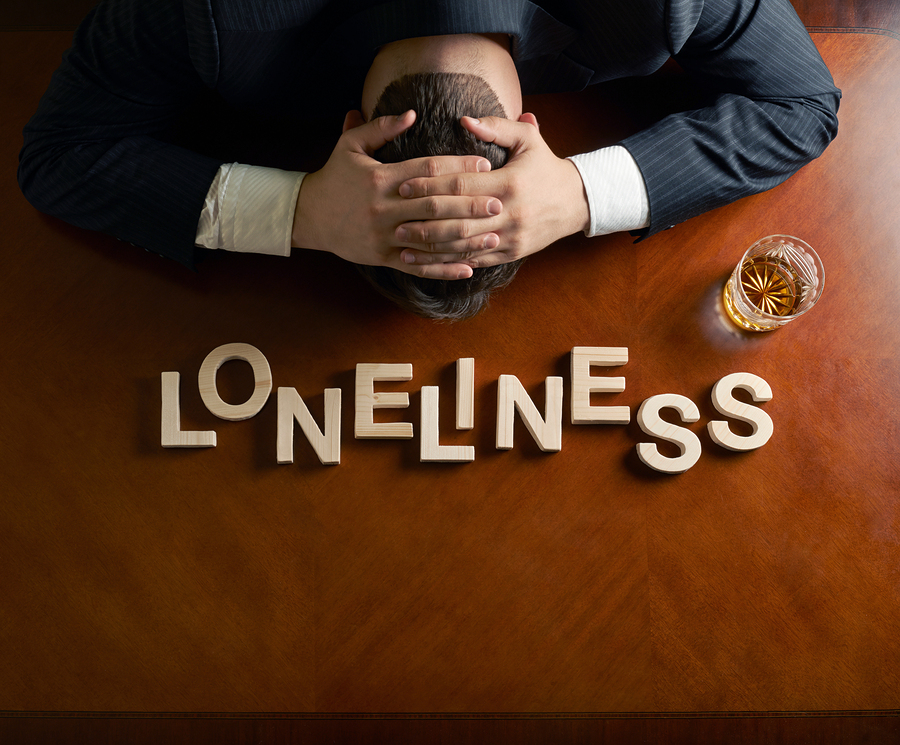Health
What causes sleepwalking? Checking signs and symptoms
Published
1 month agoon


What causes sleepwalking? Checking signs and symptoms
Have you ever fallen asleep in your bed and woken up on the living room couch? Maybe you’ve woken up with bits of food splattered on your pajamas and can’t remember anything about the midnight snack you had. If such things have happened to you, you may be one of the people who have experienced sleepwalking at least once in your life. So what causes sleepwalking?
Although the prevalence of sleepwalking is significantly higher in children, about 1.5% of adults experience sleepwalking at least once during childhood. Sleepwalking or sleepwalking can be caused by medications, genetics, or health conditions that disrupt sleep. In the following, an explanation about sleepwalking is given from the healthline website.
-
What is sleepwalking?
-
cause of sleepwalking; What causes sleepwalking?
-
stress
-
lack of sleep
-
Migraine
-
fever
-
Respiratory disorders
-
Acid back into the esophagus or gastroesophageal reflux
-
Parkinson’s disease
-
Restless leg syndrome
-
Special drugs
-
What are the symptoms of sleep walking? How can you tell if someone is sleepwalking?
-
Dangers of sleepwalking
-
See a doctor to treat sleepwalking
-
Diagnosis and treatment of sleepwalking
-
summary
What is sleepwalking?
Sleepwalking is a type of sleep disorder that occurs in the deepest part of sleep, non-rapid eye movement (NREM). This usually occurs within one to two hours of falling asleep. During a sleepwalking episode, you may sit, walk, or even do your usual activities while you are actually asleep. Your eyes are open, but you are still in a deep sleep.
The American Psychiatric Association considers sleepwalking a disorder only if it occurs frequently enough to cause distress and dysfunction during the day.

What causes sleepwalking?
Sleepwalking, which is more common in children than in adults, often disappears in adolescence. But this behavior does not stop in all people who reach adulthood, and some people may start sleepwalking in adulthood.
Sleep researchers have identified several health problems, activities, and substances that trigger sleepwalking episodes. You may also have inherited sleepwalking from your parents, as it has a genetic component. The factors mentioned below can have an effect on the occurrence of sleepwalking.
Stress
Stress and anxiety disrupt a good night’s rest. Sleep scientists think that stress during the day can play a role in sleepwalking. A valid study on 193 patients in a sleep clinic showed that one of the main triggers of sleepwalking is stressful events experienced during the day.
If you want to reduce your daily stress levels so you can get a good night’s rest, try the following stress reduction techniques:
- Exercise regularly
- Practice mindfulness techniques
- Limit caffeine intake
- Do breathing exercises
- Try yoga
Lack of sleep
People who do not sleep enough are more prone to sleepwalking. By studying MRI brain scans of people with a history of sleepwalking, researchers have found that sleep deprivation increases the number of sleepwalking.
Migraine
If you suffer from chronic migraines, you may be more prone to sleepwalking. In 2015, scientists interviewed 100 patients who regularly sleepwalk and found a strong link between sleepwalking and lifelong headaches, especially migraines.
Fever
Sleepwalking, especially in children, is associated with diseases that cause fever. A fever can also cause night terrors, a sleep disorder in which you may scream, thrash, or try to run away from scary things in your dreams.

Respiratory disorders
Obstructive sleep apnea is a type of breathing disorder that causes you to stop breathing for a short time during sleep. Obstructive sleep apnea is more than just snoring. In its severe form, sleep apnea can lead to daytime fatigue, high blood pressure, stroke, and heart disease.
People with severe obstructive sleep apnea are more likely to sleepwalk than people with a mild form of this condition. There have also been reports of sleepwalking in children with asthma. Asthma can lead to insomnia. In addition, studies show that Montelukast may induce sleepwalking in some children.
Acid back into the esophagus or gastroesophageal reflux
If you have gastroesophageal reflux disease (GERD), the contents of your stomach can back up from your stomach into your esophagus, causing annoying burning. In many people, reflux symptoms are worse at night. People with GERD and other stomach disorders are more prone to many sleep disorders, including sleepwalking. Because GERD disrupts sleep, it can cause prolonged fatigue, which in turn makes a person more prone to sleepwalking.
Parkinson’s disease
Parkinson’s disease is a neurological disease that affects the ability to move. Parkinson’s can affect the areas of the brain that control movement, as well as the areas that control sleep.
Normally, when you dream during REM sleep, the brain temporarily paralyzes certain muscles to prevent you from moving in response to your dreams and harming yourself or others. Some studies show that Parkinson’s disease may cause the aforementioned paralysis to not occur completely. This can lead to sleepwalking and other sleep disorders.
Restless leg syndrome
There is some debate among sleep researchers as to whether restless leg syndrome (RLS) causes sleepwalking. Some studies show that people with this syndrome are not more likely to sleepwalk than other people. Other studies point to a link between sleepwalking and medications used to treat restless legs syndrome.
Special drugs
Some sleeping pills, including Zolpidem, cause drowsiness. Other drugs associated with sleepwalking include:
- Sodium oxybate, which is used to treat narcolepsy or sleep attacks
- Benzodiazepine receptor agonists
- Antidepressants
- Antipsychotic drugs used to treat psychiatric disorders
- Beta blockers used to treat heart disease and anxiety

What are the symptoms of sleepwalking? How can you tell if someone is sleepwalking?
When you try to get the attention of sleepwalkers, they usually don’t react. A person who is walking in his sleep has a fixed and soulless look. According to sleep experts, sleepwalkers may engage in other activities while asleep, including:
- eating
- talk
- Prepare food
- Urinating in non-toilet areas
- Trying to get out of the house
- Having sex
Often, when people with this condition wake up, they do not remember their sleepwalking. If you wake up a person who is sleepwalking, they may become confused.
Dangers of sleepwalking
Although most sleepwalking episodes end without harm, sleepwalking can be very dangerous. Some people may try to drive or do other things without realizing what is going on around them. A study conducted on 100 patients with a history of frequent sleepwalking showed that 57.9% of them were injured or injured someone else during sleepwalking. Injuries associated with sleepwalking included falling down stairs, or hitting walls or furniture.
Since a sleepwalking person may injure himself or others while walking in his sleep, it is better to wake him up. Of course, you should do this slowly, because the sleepwalker may be confused after waking up.
See a doctor to treat sleepwalking
Sleepwalking behavior in most children who have the habit of sleepwalking disappears without the need for treatment during adolescence. However, if sleepwalking starts in adulthood, it is not a bad idea to talk to a doctor to check for underlying diseases that may cause sleepwalking. If you sleepwalk frequently or if your sleepwalking causes problems in your daily functioning or relationships, it is better to see a doctor.
Diagnosis and treatment of sleepwalking
The most common way to detect sleepwalking is to have someone else witness it firsthand. Since most sleepwalking occurs during childhood, in most cases parents report sleepwalking to the doctor.
If your doctor thinks your sleepwalking is worrisome, a sleep test can reveal more information about your condition. During a sleep test, the healthcare team will check your oxygen levels, brain waves, breathing, and movements while you sleep.
If sleepwalking is not severe, you may be able to prevent it by reducing stress and improving sleep habits. If these methods are not effective enough, the doctor may also prescribe medication. Clonazepam and diazepam drugs reduce somnolence. Antidepressants and benzodiazepines may help reduce stress so you can relax. Most children do not need treatment for sleepwalking, as the condition often resolves on its own with puberty.
Summary
Sleepwalking is a sleep disorder in which you walk, talk, or do other activities while you are deeply asleep. Sleepwalking occurs during the deepest part of the sleep cycle, usually within an hour or two of falling asleep.
Sleepwalking, which is more common in children than adults, often disappears in adolescence. But not everyone’s sleepwalking stops in adulthood. Sleepwalking has a genetic component and can also occur due to stress, lack of sleep, taking certain medications, respiratory disorders, neurological diseases, fever, and migraine. If you sleepwalk frequently and your sleepwalking is troublesome, see your doctor.


You may like
-




How does loneliness affect the brain and body?
-




Why is the loneliness epidemic so hard to cure?
-




The secret of the human heart; How did evolution make the vital organ of our body unique?
-




Can coffee consumption cause weight loss?
-




What is the difference between the brain of athletes and the brain of normal people?
-




Why do we humans sleep?


Pronoun: An indefinite large number of people or things.
Noun: A multitude; a great aggregate; a mass of people; the generality; the common herd.
Noun: A considerable number.
Adjective: Existing in large number; numerous.
How does loneliness affect the brain and body?
People were alone even before Corona. Before the spread of Corona, people approached each other without anxiety; But now researchers have found that Americans are lonelier than ever. According to Cigna Health Center research in 2018, almost 54% of the 20,000 Americans who participated in this research felt lonely. In a period of more than a year, this figure reached 61%. Generation Z adults between the ages of 18 and 22 can be considered the only generation to surpass Boomers, Generation X, and Millennials. (Generation Z refers to those born from the mid-90s to the 2010s. The boomer generation or the boom generation refers to those born between 1946 and 1964, Generation X refers to those born in the early 1960s to 1980s, and the millennial generation refers to those born in the 1980s to the early 2000s. will be).
According to Doug Namek, Cigna’s chief medical officer, loneliness can throw off the worldly equation. According to many researchers, staying alone for a certain period of time is harmful to people’s mental and physical health. Signal research has also placed the health risks of loneliness alongside smoking and obesity. A Lancet research in 2018 describes loneliness as follows:
Conditions that cause irritability, depression and self-centeredness have a direct relationship with a 26% increase in the risk of premature death.
On the other hand, due to the spread of Covid-19, maintaining distance is the safest way to stay healthy. Although social distancing can increase feelings of isolation. As a result, COVID-19 can be seen as a new reason for the effect of loneliness on the brain, heart, and immune system.
Why are we lonely?
Loneliness can mean separation from friends and family, but the feeling of loneliness is much deeper than not having a companion on holidays or not going to various celebrations and ceremonies. From an evolutionary point of view, membership in groups and communities has always meant self-protection, division of labor, and increased chances of survival. On the other hand, humans have evolved over a long period of time and need their tribes. According to Julian Hutt Lundstad, professor of psychology and neuroscience at the University of Birmingham:
Loneliness and lack of membership in groups leads to anxiety. In this situation, we have to deal with the environment alone without the help of others, that’s why our brain is on alert and also sends a warning signal to other parts of the body.
Alertness leads to increased stress. Stress hormones, including cortisol and norepinephrine, can affect sleepiness, weight gain, and anxiety over long periods of time. According to Halt Lundstedt, the coronavirus is one of the most stressful situations that many people have experienced in their lifetime. Daily life has been disrupted, unemployment has risen dramatically, and more than 6 million people worldwide have been infected with the virus. Usually, people in difficult situations need the support of family and friends. Due to the nature of the coronavirus, people are now more alone than before and can hardly communicate with each other.

The genetic structure of lonely people is more prone to disease
Study alone
Almost everyone can cope with loneliness, but scientists are still looking to investigate its effects on health. On the other hand, loneliness is a subjective feeling that cannot be measured. Even the social circle of people is not a guarantee that they are not alone.
According to Holt Lundstedt, surveys usually ask people about loneliness either directly (how lonely do you usually feel?) or indirectly (do you feel friendless?).
NASA has been investigating the effects of isolation and the enclosed environment on astronauts for years and has reached similar results to other studies: isolation conditions can lead to behavioral and cognitive problems. Researchers are also looking to investigate the biological dimensions of loneliness as well as its physical effects on the body in other places.
Perhaps, to understand the feeling of loneliness, it is necessary to examine people’s brains. Researchers at the Rush Alzheimer’s Disease Center in Chicago studied 823 adults over a four-year period. They used questionnaires to assess loneliness, categorize Alzheimer’s disease and dementia, as well as test participants’ thinking, learning, and memory, and set loneliness scores between 1 and 5. According to the results, the risk measure of Alzheimer’s disease increases by 51% for each point of the scale.
Loneliness puts the body in a state of alert and leads to an increase in anxiety
Also, the dead people were autopsied during the investigation period. According to the results, loneliness is the cause of brain changes associated with Alzheimer’s disease, including plaques and neural tangles or tissue damage due to lack of blood flow. However, Robert S. Wilson, one of the researchers of this study, believes that loneliness can make people vulnerable to the neurodegenerative effects associated with aging. According to Turhan Connelly, professor of neuroscience at Stony Brook University: “Loneliness can be a predictor of cognitive decline.”
The exact relationship between loneliness and health problems is still unclear. According to Connelly, if a person is lonely and feels bad about themselves, they will take less care of themselves. For example, these people don’t eat well usually drink a lot, have a lot of worries, or lack sleep. Such habits will have long-term consequences. Connelly also discussed a collaboration with David Bennett, another researcher at the Rush Alzheimer’s Center who has studied the genes of people who are not alone.
Bennett began a long research almost thirty years ago. In this research, the participants agreed to give their brains to researchers after death in exchange for an annual physical and mental check-up. The researchers investigated two points of the brain related to cognition and emotion. According to the results, genes related to cancer, cardiovascular, and inflammatory diseases appeared more in single people. According to Connelly:
There is usually a network of relationships between different genes that can influence each other. For this reason, the effect of loneliness on the occurrence of diseases can have a genetic reason.
Of course, the above findings do not mean that loneliness leads to heart disease. Rather, more research is necessary, such as the role of heredity in the occurrence of genes. Early research by UCLA researcher Steve Cole suggests one possibility: the release of certain hormones under conditions of stress and loneliness can activate specific genes that cause health problems. According to Connelly:
The mental experience of the brain can become a biological process, which is our goal to investigate this process.
A better understanding of the above relationships can affect the treatment methods of patients.
The future and loneliness
Despite the reduction in the intensity of quarantine and the gradual removal of restrictions on the activities of restaurants and public places, the impact of social distancing on society is still unclear. According to Harvard researchers in April, compliance with social distancing is necessary until 2022. NASA astronaut Scott Kelly spent 340 days alone in space, and in March published an op-ed based on his experiences in the New York Times Magazine. Kelly recommends reading magazines, keeping a schedule and discipline, as well as having fun in your alone time. Namek from the Cigna Institute also believes that it is necessary to examine loneliness in people and have an honest conversation about loneliness with people who struggle with this problem. According to him:
We need to contact our friends maintain our relationships and have meaningful conversations. It is necessary to always feel comfortable in asking the feelings of the other party.


Noun: The condition or state of being alone or having no companions.
Noun: The state of being unfrequented or devoid of human activity (of a place or time).
Noun: A desire to be alone; disposition to solitude.
Noun: A feeling of depression resulting from being alone or from having no companions.
Noun: The condition or state of being alone or having no companions.
Noun: The state of being unfrequented or devoid of human activity (of a place or time).
Noun: A desire to be alone; disposition to solitude.
Why is the loneliness epidemic so hard to cure?
Richard Weisbord, a psychologist and lecturer at Harvard University, started a new study in the early months of 2020 along with the worldwide quarantine of Covid-19. In his opinion, loneliness or its specter is everywhere. Two years ago, Weisbord read a study from insurance provider Cigna that found 46 percent of Americans sometimes or always feel lonely, a number that rose to 52 percent in 2019 when the study was repeated. Weisbord thought, in quarantine, this number has increased a lot.
Weisbord wanted to know how loneliness feels for lonely people. What are its possible consequences? And what causes it? It is difficult to answer these questions; Because loneliness is a complex or multidimensional emotion; That is, it includes the elements of sadness and anxiety, fear and heartbreak. The experience of loneliness is personal and highly subjective (internal) and depends on a person’s way of thinking. A clerk in a busy grocery store can be intensely lonely, just as a recluse living in a cave can endure solitude in complete happiness.
Loneliness should not be confused with isolation. For convenience, most researchers still use the definition coined by social psychologists almost three decades ago, in the early 1980s. Loneliness is described as “the difference between desired and achieved levels in one’s social relationships” which, unfortunately, is also very subjective.
To understand the current loneliness crisis, Weisbord, who leads a Harvard project on health and well-being, created a 66-question survey and sent it to about 950 people across the United States. With the exception of a few direct statements such as “In the past four weeks, how often have you felt lonely?”, most questions indirectly explore loneliness from different angles; For example, are there people in your life who ask for your opinion on things that are important to you?
Loneliness is an epidemic that is more felt in today’s society
Some of the other questions in the questionnaire included: “Do you feel that you connect with people more than they connect with you?” or “Has anyone ever taken more than a few minutes to ask you how you’re doing in a way that makes you feel like they really care?”
When the results came in, Weisbord was shocked by the extent of the loneliness problem; 36% of respondents experienced chronic loneliness, and 37% experienced occasional loneliness in the last month. Among those who felt lonely, 46 percent said they interacted with people more than people interacted with them, and 19 percent felt that no one outside of their family cared about them at all.
In February 2021, as Harvard planned to resume face-to-face classes, the Weissboard team released the results of the survey, highlighting deep social issues in America. These findings attracted a lot of attention and many saw themselves as partners.
A 2021 Gallup poll found that 25 percent of adults often feel lonely, and nearly 40 percent of young adults do so regularly. Although these numbers have improved slightly, 25 percent of Americans still feel more lonely than before they were born.

Photographer: Andrew Gook
Last year, U.S. Surgeon General Vivek Murthy released a report calling loneliness an epidemic that affects Americans more than diabetes or obesity. The World Health Organization also classified loneliness as a global public health concern. Like depression and anxiety, loneliness has become a hot topic in culture and has spawned numerous articles, self-help books, podcasts, and even startups focused on loneliness.
Japan and Britain have even appointed single ministers tasked with monitoring and ameliorating the depth of the crisis, either through public awareness campaigns or initiatives such as a scheme in the UK where letter carriers were asked to meet elderly residents on routes. Call yourself.
Attempts to address loneliness often show that simple actions such as a phone call, email, or meeting can solve the problem by restoring lost social connections. However, this view misunderstands the complexities of modern life and may distract from deeper problems such as alienation, isolation, mistrust, and disconnection. These issues stem from the weakening of institutions and traditions that once bound people together, and addressing them requires more than a return to the past.
Unlike anxiety or depression, loneliness is a relatively modern concern. Historian Fei Bond Alberti notes in his book A Biography of Loneliness that loneliness, as we understand it today, did not become widespread in the world until after the 1800s. The West was not discussed.
Loneliness is a relatively modern concern
It is not correct to say that no one knew the word loneliness before the 1800s, But loneliness was not always associated with negative feelings. While the word appeared in Shakespeare and Robinson Crusoe, solitude was often seen as a positive experience, especially in the busy past.
Prior to the 19th century, loneliness did not carry the same emotional weight as it does today, Alberti notes. His research shows that there was no mention of “solitude” in English literature until about the 1820s when the term suddenly became very popular. This change coincided with rapid changes in society, such as war, industrialization, and urbanization, which tore apart traditional societies and led people to seek new ways to express the emotional effects of these changes.
In the 1950s, American scholars began to explore loneliness as a modern subject, paving the way for loneliness studies. Sociologist David Reisman linked loneliness to social changes in post-war America. In his book The Lonely Population, Reisman explained how prosperity leads Americans to focus on material possessions and social comparisons; A behavior that he called “other-oriented”. This phenomenon is similar to today’s term FOMO (fear of being left behind). When people can’t get what others enjoy, the feeling of loneliness starts.
Some experts consider loneliness a severe medical condition, similar to depression, with debilitating effects. American psychologists Louise Hawkley and John Cacioppo used hypnosis in an experiment to induce loneliness in participants. This led to an increase in people’s blood pressure and inflammation, showing that loneliness directly affects health. When the loneliness induction ended, their health indicators improved.
Loneliness is a biological signal designed to motivate us to seek social connection and support
In another study by Hawkley and Cacioppo, participants were removed from a social activity to show that loneliness, similar to physical pain, triggers a pain response in the brain. Like hunger, this response is a biological signal designed to motivate us to seek social connections and support.
Loneliness can become a self-reinforcing cycle, where fear and anxiety convince people that they are not worth connecting with, making them feel trapped and increasingly isolated. A 2021 study by psychologist Daniel Maitland found that when lonely people are asked to share personal details, they experience a lot of stress, suggesting that vulnerability is a big challenge for them. This makes the traditional advice to join social activities ineffective, as such gatherings are outdated and unattractive to many.
In his book “Bowling Alone”, Robert Putnam noted the decline of American participation in organizations and social groups. Almost 25 years later in 2024, fewer Americans are getting married than in the middle of the 20th century. The number of people living alone has more than tripled to 29%. But being married doesn’t necessarily prevent loneliness, because a bad marriage can be very isolating, and likewise, living alone doesn’t always mean being alone.
Less attendance at religious ceremonies is also an example of reducing the traditional activities of society. Weisbord believes religious communities are places where adults engage with children, defend moral values, and engage children with big moral questions. He says he does not suggest becoming more religious; But in those aspects of religion where you feel an obligation to your ancestors and children, there is a structure to deal with grief. We have to figure out how to reproduce those aspects of religion in secular life.
Weisbord and Milena Batanova, the project’s director of research and evaluation, found in a follow-up survey that many respondents attributed their loneliness to a lack of “meaningful connection”; Even when surrounded by others. Emotional closeness rather than physical presence was often the main issue, and some felt devalued or disconnected from those around them.
Working doesn’t bring much relief, as fewer Americans find meaning in their careers, especially as the rise of remote work complicates community building. Older people are more likely to have found meaningful relationships and close friends at work, while younger people struggle with dating due to the shift to telecommuting and virtual communication.
The epidemic of loneliness has left lasting effects on social interactions; So many people with poor social skills were released from quarantine. Simultaneously with the rise of frictionless forms of digital interaction such as automated payment systems and food delivery, a phenomenon has emerged that some experts call “cocooning”; It means retreating to the digital world that lacks meaningful communication with people.

iStock
Julian Holt Lanstad, professor of psychology and neuroscience at Brigham Young University, noted that from 2003 to 2020, Americans spent more time alone and less time with friends and family. The data backs this up, showing that many people struggle with relationship issues and feel like they don’t connect well with people. This suggests that many Americans are not getting the social support they need, either because of loneliness or actual isolation.
Historically, the peak of loneliness has coincided with major social changes. Sociologist Eric Kleinenberg notes that loneliness often became a major concern during times of cultural change, such as the advent of radio in the early 1900s, the rise of car culture, and the social upheavals of the 1960s and 1970s. According to Kleinenberg, loneliness is often used to explain the discomfort that people feel when cultural change happens too quickly and people cannot adapt.
The epidemic of loneliness today is very deep; Because it is happening on an unprecedented scale, driven by drastic changes in social life, including political dysfunction, mental health crises, and the transformation of communication through the Internet. Many people express longing for the past when social connections seem stronger, but this nostalgia may not provide a realistic solution to the current crisis. Instead, efforts such as encouraging face-to-face activities and fostering traditional forms of community may help, but perhaps not completely solve the problem.
Perhaps the solution to loneliness is new ways of interacting
History shows that social change often leads to new forms of society rather than a return to old forms. For example, during the Industrial Revolution, people adapted to building new urban societies instead of retreating to rural life. Similarly, the way out of today’s loneliness may involve embracing new forms of communication, such as those enabled by smartphones and the Internet, that can create meaningful relationships despite physical distance.
The evolution of social interactions today, with online platforms allowing people to communicate in ways that were previously impossible. Such an opportunity may be part of a broader adaptation process. In other words, the current period of loneliness can be a transitional phase in which society adapts to new realities and finds new ways to connect and support each other.
Finally, the crisis of loneliness may represent an evolutionary step toward new forms of togetherness; Where, despite physical separation, people find ways to reconnect and create meaningful relationships in the modern world.
Health
The secret of the human heart; How did evolution make the vital organ of our body unique?
Published
2 weeks agoon
31/08/2024

The secret of the human heart; How did evolution make the vital organ of our body unique?
From the giant blue whale to the tiny insectivore, mammals inhabit almost every corner of our planet. Their amazing adaptability to different environments has long fascinated scientists, as each species has developed its own characteristics to survive and thrive in different environments.
Despite the wide biodiversity of mammals, until recently it was thought that the structure and function of the heart is similar in all species. But a new study by a team of researchers from Swansea University’s School of Medicine, Health and Life Sciences in Wales shows that the human heart is an exception, and is strikingly similar to the hearts of our closest relatives, the great apes, including chimpanzees, bonobos, Orangutans, and gorillas are different. But what is the reason for the difference in human hearts?
Humans diverged from chimpanzees ( Pan troglodytes ), our last common ancestor with the great apes, about five to six million years ago. In contrast, humans evolved to stand and perform more physical activities, such as continuous hunting and developed much larger brains.
The changes in the human body were associated with a very high increase in the need for metabolism; The body needed more blood to pump blood from the heart to the muscles and brain. A new study shows that the human heart has adapted to support standing on two legs, moving around, and growing a bigger brain.
Humans evolved to stand and perform continuous physical activity
Over the past 10 years, researchers have conducted numerous assessments of the cardiovascular system of great apes around the world. The study’s research team managed to collaborate on this project with veterinarians and care workers in the UK, Europe, Africa and Asia. One of the important aspects of this collaboration and evaluations was the use of cardiac ultrasound, which can be used to examine the structure and function of the heart, the size and manner of contraction, twisting and rotation of the heart muscle.
Researchers have concluded in previous studies that the structure of the human heart may be different from the heart of a chimpanzee. Using ultrasound of the heart, they found that the left ventricle of the heart, which is where the heart pumps the heart, in chimpanzees has bundles of muscle embedded in “turgidized” tissue.
Trabeculation or trabeculation refers to the formation of small and network-like muscle bundles inside the ventricles of the heart. Tortigated tissues are like little blades that help the heart muscle to work better when pumping blood.
 Comparison of left ventricular tortification in great apes.
Comparison of left ventricular tortification in great apes.
The aim of the researchers in the new study was to investigate the structure of tortiginated tissue in other great apes. They found that other great apes have the same heart structure as chimpanzees. In contrast, humans have a smooth wall in their left ventricle. This difference is especially obvious at the bottom of the left ventricle. In the lower part of the left ventricle, the smoothness of the human heart is approximately four times greater than that of the great apes.
A single heart meets our need for more physical activity and a bigger brain
The study not only showed structural differences in the left ventricle of humans compared to great apes but also found a major difference in how the hearts function. Using a specialized technique called speckle tracking echocardiography, which follows the movement of the heart muscle during contraction and expansion, the researchers investigated how this muscle thickens, twists, rotates, and stretches.
The results of the examination of the hearts were surprising. The lowest rate of tortuosity is seen in the human heart, but it was much higher during contraction, twisting, and turning in the lower part of the human heart. In contrast, great apes, with heavily tortiginated hearts, exhibited less motion.
Researchers believe that the human heart evolved from the tortiginated structure seen in other great apes to increase its ability to twist and contract more efficiently. This increased torsion, along with the smooth walls of the ventricles, probably allows the human heart to pump more blood with each beat. This satisfies our need for more physical activity and a bigger brain.
The findings of the study challenge the hypothesis of the sameness and similarity of the structure of the heart in all mammals. Instead, subtle but critical differences in cardiac anatomy and function have emerged in response to unique environmental challenges.
Cardiovascular diseases
A new study by researchers reveals the secret of the evolution of the human heart. However, the research in the field of analyzing the heart of endangered great apes is still going on. Unfortunately, the leading cause of death in captive great apes is cardiovascular disease.
Unlike humans, great apes do not appear to develop coronary artery disease. But their heart muscle undergoes a fibrotic process (thickening or degeneration of the fibers) that leads to weak contraction and susceptibility to arrhythmia, a critical problem in heart rhythm regulation. The cause of this disease remains unknown, therefore, a group of researchers in the International Primate Heart Project evaluated the cardiovascular physiology of great apes around the world to gain a better understanding of this disease.
Prior to the current project, little was known about the normal cardiovascular physiology of great apes. Through a collaboration with veterinarians, the new study has yielded critical data and critically improved our understanding of the evolution of the human heart, as well as the understanding, diagnosis, and management of cardiovascular disease in great apes.
The findings of the study have been published in the journal Nature.


Do animals have an understanding of the concept of death?


What is Kali Linux? Everything you need to know about this popular but mysterious distribution


Sony Brand Story; From the production of rice cookers to becoming one of the most famous companies in the world


How did the people of the past imagine the future?


Mammoth and dodo return to nature


Canopus; What do we know about the second brightest star in the sky?


How to use iMessage on Android?


Can humans endure the psychological torment of living on Mars?


Xiaomi Glorimi M2 Max watch review; Alternative economic option for iPhone owners


Artificial intelligence problems; Frauds based on artificial intelligence and methods to deal with them
Popular
-



 Technology1 year ago
Technology1 year agoWho has checked our Whatsapp profile viewed my Whatsapp August 2023
-



 Technology1 year ago
Technology1 year agoSecond WhatsApp , how to install and download dual WhatsApp August 2023
-



 Technology1 year ago
Technology1 year agoHow to use ChatGPT on Android and iOS
-



 AI2 years ago
AI2 years agoUber replaces human drivers with robots
-



 Technology1 year ago
Technology1 year agoThe best Android tablets 2023, buying guide
-



 Technology1 year ago
Technology1 year agoThe best photography cameras 2023, buying guide and price
-



 Humans2 years ago
Humans2 years agoCell Rover analyzes the inside of cells without destroying them
-



 Technology1 year ago
Technology1 year agoHow to prevent automatic download of applications on Samsung phones
